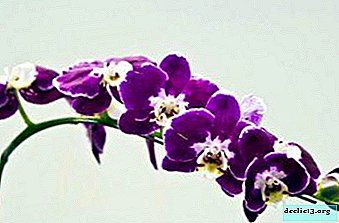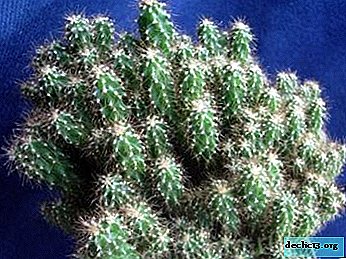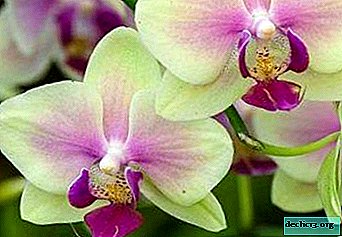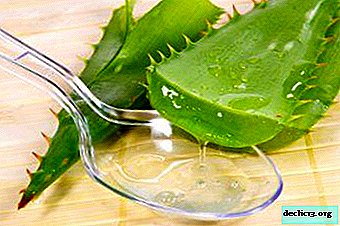What does a lilac orchid look like and what kind of care is needed for it? Plant photo

The white color of orchids is always relevant, only in recent years has the popularity of other indoor colorings increased. Quite often it is possible to meet a lilac orchid. Such an unusual flower often appears on the windowsills of many gardeners in our country. Next, we’ll tell you how to care for such exotic things, namely: proper fertilizing, transplanting, reproduction. And also, what diseases and pests can destroy the purple beauty.
What kind of flower is this?
Definition
Lilac orchid is known to many under the name "Violation". The name of the houseplant comes from the Latin name "Phalaenopsis violacea". Photos of this epiphytic plant fascinate with its own beauty.
The lilac orchid has an unusual color, but does not have an established Russian name. Most often, in Russian-speaking sources, a plant of this type is called a dark lilac or purple orchid, and gardeners also use a scientific name.
Description of appearance
The flowers of the plant, as a rule, are characterized by a waxy appearance, have an attractive, pronounced aroma, which can be compared with the smell of water lilies, and freesia or bergamot. The size of the flower across does not exceed 6 cm. The petal proportion of flowers is clearly distinguishable, as a rule, it has an elliptical or round-elliptical shape.
On a note. A flowering plant is often found throughout the year, and the flowering period begins in the spring, lasts until the fall.A variety of color alternatives is shown in the photo of this plant. The lilac orchid has loose, elliptical or long-elliptical, sharp or dull leaves. Adult representatives of plants have strong leaves, the length of which can be higher than 25 cm, and the width reaches 12 cm.
What varieties have such a shade, photo of plants
In our country, the cultivation of some types of orchids, owning a lilac color, is practiced. In addition, like the white orchid, this type of houseplant has its own admirers. Undoubtedly, white flowers are most in demand among gardeners, however, a lilac orchid also quite often comes across not only in the photo, but also in pots.
Wanda
Tall houseplant has a height of more than 1 meter and has very strong, hanging roots of a greenish-grayish color. Such a root system draws water from the air masses, which is considered a distinctive feature for various vandal orchids. The sinuses of the tapeworm leaves contain 4 peduncles, where no more than 15 flower buds are formed. The lilac flowers themselves are quite large and fragrant.

Phalaenopsis
The name of a houseplant means "moth-like." In natural circumstances, growth occurs on tree trunks.
Reference. When growing at home, the plant needs a special climate, which must be artificially formed.The flower has green aerial roots involved in photosynthesis. The leaves are collected directly into the outlet on the lower stem part. Orchid bloom is long, can be 6 months.

Dendrobium
Very small houseplant. Certain types of this plant have the ability to take off leaves once a year. Carrying out activities to care for Dendrobium is quite difficult. This type of orchid is very poorly resistant to drafts, sunrays.
Lilac orchids of the Dendrobium type require additional top dressing with the use of nitrogen and phosphorus-potassium fertilizers. In addition, you should maintain a special temperature, humidity, and in addition the duration of daylight hours.

Breeding History
About 400-450 years ago, orchids from rainforests were first brought to Europe. Few then thought that the orchid would be quite popular and one of the most famous home flowers in Europe. Since, the original plant copies brought did not please the Europeans eye for a long time and soon disappeared.
The then gardeners did not have the knowledge and experience in caring for an orchid. Orchids are represented by a large number of species of varieties, what hides the primary merit of thousands of breeders from all over the world.
At present, breeders have managed to present more than 15 thousand mixed species from 25 thousand natural species of orchids. New mixed species have different shapes and colors, from which anyone can find a favorite instance. Now any gardener can embellish his own house with a unique and easy-to-care plant.
Step-by-step instruction
Care
This type of orchid, like lilac, grows well and blooms in partial shade. For this plant, not very hot, but rather warm indoor temperature, is important.
It is imperative to equip adequate ventilation with a humidity of 40%. At the lowest parameters of air humidity, lethargy of leaves and falling of flowers can occur in a plant. Abundant and frequent spraying causes plant decay.
Important! Excessive irrigation, as well as significant humidity in the air can also stimulate decay.Watering is carried out after complete drying of the planting substrate or if moisture is not visible on the inner walls of the flowerpot. It is possible to establish the need for watering by staining the root system, which becomes the lightest.
For top dressing
Lilac orchids should be fed no more than 1 time per month. Directly after flowering, already withering peduncles should be pruned.
By transplant
 A transplant of lilac orchids must be done every 3 years. By this time, as a result of irrigation and fertilizer application, the planting substrate loses the necessary features, and the layer is converted into trash, useless for the plant.
A transplant of lilac orchids must be done every 3 years. By this time, as a result of irrigation and fertilizer application, the planting substrate loses the necessary features, and the layer is converted into trash, useless for the plant.
The best period for transplants is the period of early spring immediately before the activation of plant growth, as well as the growth of new roots.
It is not recommended to transplant a room orchid that has released a flower arrow. Failure to comply with this rule leads to a slowdown in the formation of the peduncle and the dropping of unopened flower buds.
By breeding
Artificial methods of propagation of orchids are quite elementary. We will analyze each of them individually.
- Rhizome separation. As a rule, the plant copes with this task on its own, but it is also possible to manually divide the rhizome. Remove the flower from the pot and clean its roots from the substrate. Cut the rhizome completely between the false bulbs. Sprinkle the roots with charcoal, disinfecting them in a similar way. Plant the resulting plants in separate containers.
- Top cuttings. If the areas of the shoots are at a considerable distance, which is typical for individual rapidly growing types of orchids, then this method of reproduction is suitable. Disinfect the knife, and then cut the shoot at a height of half the handle. Disinfect the cut using charcoal, plant the stalk in a separate pot.
- Side shoots. In case you saw the occurrence of a secondary process, generously spray it so that it grows and forms roots. If this happens, separate the new plant, disinfect the cut and plant a small orchid in a separate container.
- Seed method. This method is used extremely rarely, since the orchid has small seeds that do not own nutrient tissue. A synthetic nutrient medium for seeds is formed under disinfected conditions, where the seeds germinate for 3-9 months. In order for the sprout to be transformed into a full-fledged plant, it will take about three years, and the first flowering can be expected up to 10 years.
Pests and diseases
Thanks to the thick leaves, plants are extremely rarely damaged by pests. However, with insufficient care, the plant is damaged by a scab, a mealybug. Continually inspect your plant for parasites. The found pests are eliminated with a cotton swab dipped in a soap or alcohol solution. With powerful infection, spraying karbofosomes is effective. Of the diseases of orchids, a variety of rot is more dangerous.
Conclusion
Lilac orchid is considered the most popular type among the connoisseurs of these flowers. This type is perfectly adapted to indoor growing conditions and feels good in modern homes.

















